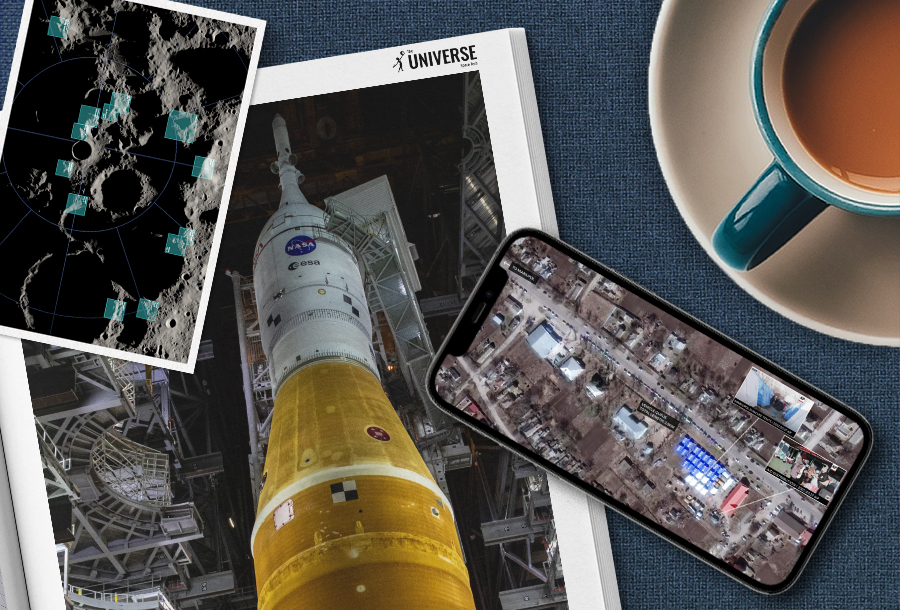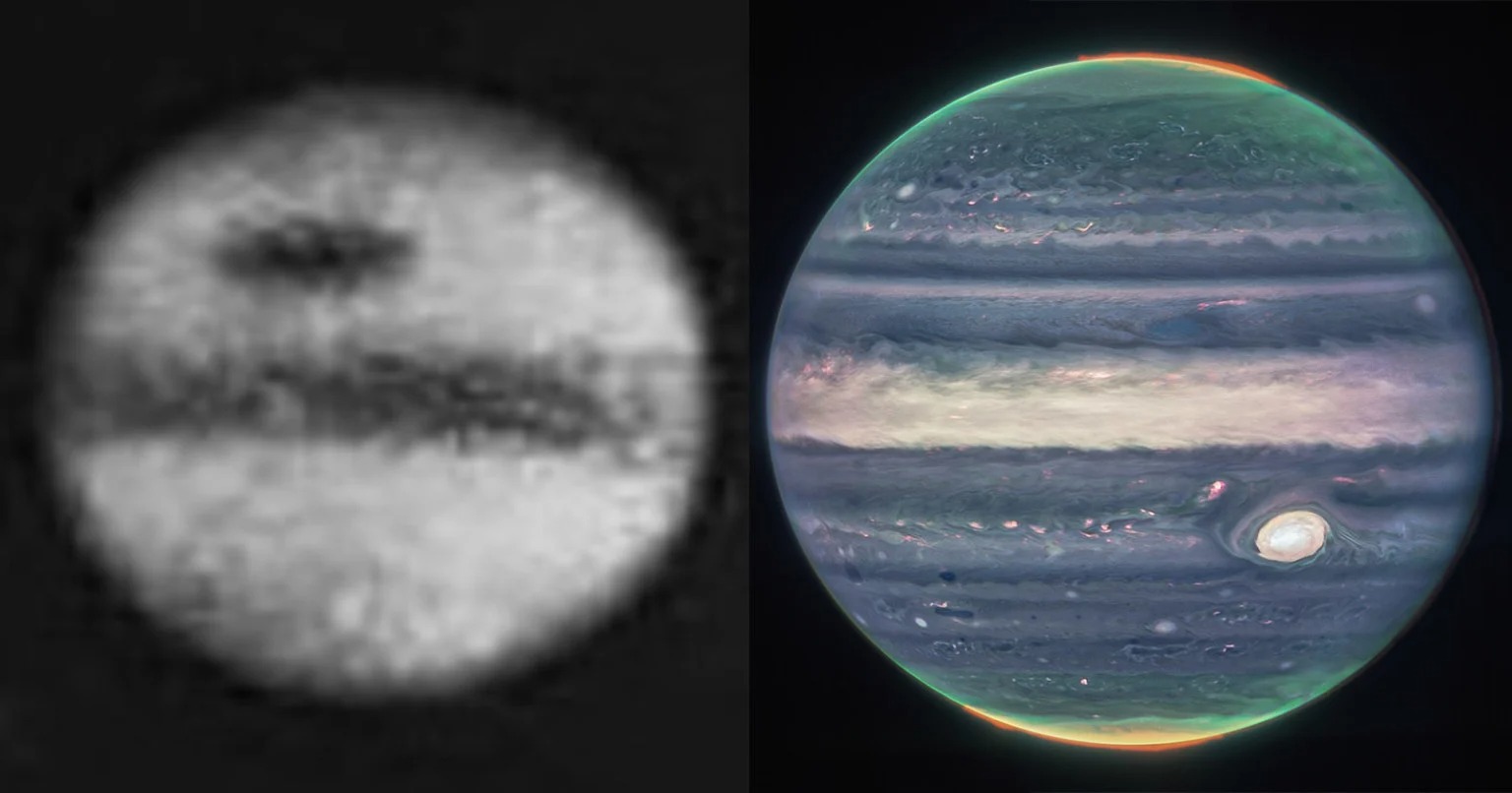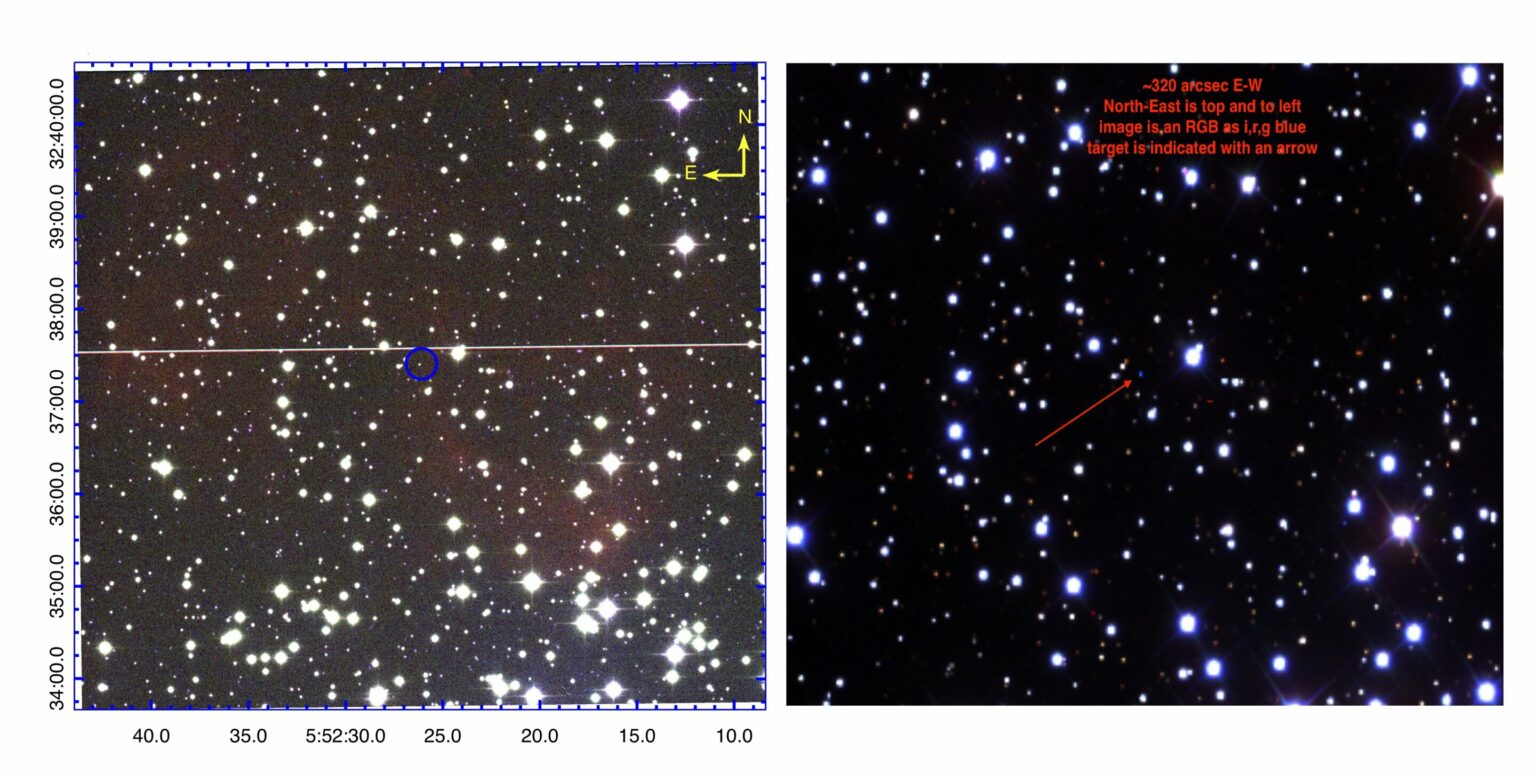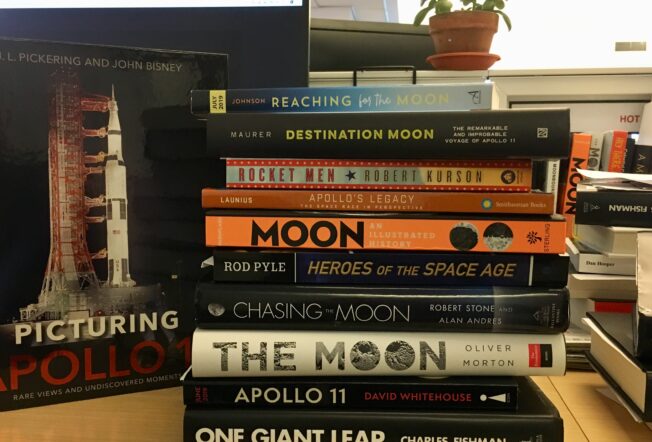Selection of the most interesting space news for the week: Astronomers have found the oldest planetary nebula, and we have collected five interesting facts about the SLS megarocket and recommend the eight best books about the Apollo lunar program.

“Wisdom is not a product of schooling but of the lifelong attempt to acquire it.”
― Albert Einstein
Artemis Mission: TOP 5 interesting facts about the NASA SLS Rocket
While you are waiting for the live broadcast of the launch on September 3, we invite you to learn some interesting facts about the megarocket, which was created not only for humanity’s travels to the Moon, but even to Mars.
- Designed for interplanetary travel. The SLS is the only rocket with enough power to send the Orion manned spacecraft to the Moon and even further.
- SLS is more powerful than Saturn V. The SLS is 12 meters smaller than the Apollo-era rocket, but its thrust is 4,000 tons, which is 15% more powerful than the Saturn V.
- SLS is built on the legacy of the Space Shuttle. NASA has included in the new rocket the main components of the “space shuttles” that operated from 1981 to 2011.
- SLS is a real transformer. Engineers have designed the SLS in such a way that the rocket can be improved and more powerful configurations based on it, since future Artemis missions will be more difficult.
- The most expensive “rocket of the nation”. About 3,800 suppliers in all 50 states have joined the SLS and Orion rocket projects. Each launch will cost USD 4.1 billion, which is about one–fifth of NASA’s total budget. Officials expect NASA to spend USD 93 billion on the Artemis program by 2025.
Satellite images made it possible to reproduce the filtration system in the occupied territories
Researchers from the Yale School of Public Health conducted an investigation into the filtration of the Ukrainian population by the occupiers in the Donetsk region. With the help of satellite images, they have established 21 objects in which citizens of Ukraine are being held. By combining satellite images with data from open sources, the researchers found that the objects can be intended for four different purposes. Some of them are intended for filtering, others for registration, detention or punishment of Ukrainians.
The researchers paid special attention to correctional colony No. 120 near Olenivka. The investigators insist that they have all the evidence that the prisoners of war are in terrible sanitary conditions, and satellite images indicate the need for access to the graves of independent investigators, but Russia still refuses to grant them appropriate access.
China creates a nuclear reactor to work in deep space
A Chinese nuclear reactor designed to operate in deep space has passed a complex efficiency assessment. It is proposed to use it for a mission that will explore Neptune or in an analog of the Voyager program, which can be launched by the Celestial Empire. Reactor is capable of producing 1 MW of electricity for the needs of the propulsion system and other spacecraft systems.
The US and China chose the same sites for landing on the Moon
Amid NASA’s ongoing attempts to launch the Artemis I mission, disputes between the US and China over manned missions to the Moon have escalated. The United States and China almost simultaneously named possible landing sites for their monthly missions. All possible landing sites of both countries are grouped around three craters: Shackleton, Haworth and Nobile. It is in these places that there is the greatest chance of finding volatile substances and, first of all, water ice. Therefore, these landing sites are the most valuable on the moon.
Astronomers confirm the orbit of the DART mission’s target
A team of researchers from the Applied Physics Laboratory (APL) performed a series of observations of the binary asteroid Didymos. They confirmed that on September 26, 2022, the asteroid will be in the right point in orbit to be rammed by the DART probe.
Didymos is a 780-meter asteroid from the Apollo group. This means that in its movement it sometimes crosses the Earth’s orbit. Didymos has a 160-meter satellite called Dimorphos, which is the target of the DART probe launched last year. On September 26, 2022, the 500-kilogram device is going to crash into the asteroid. The purpose of the experiment is to check the potential efficiency of a controlled ram to change the orbit of an object threatening the Earth.
Photo of the week

Astronomer Jasmine Singh shared a fascinating comparison of the very first image of Jupiter, which is the first ever photograph of the planet, together with a fresh photo obtained by the James Webb Space Telescope (JWST). The very first photograph of Jupiter was taken in 1879 by the Irish astronomer Agnes Mary Clerk, who published it in the book “A Popular History of Astronomy During the Nineteenth Century”. A recent JWST photo taken on July 27, 2022, has such amazing clarity that you can even notice the dancing auroras of Jupiter over both of its poles.
Interesting figure — 70 thousand years

An international team of astronomers announced the discovery of a new planetary nebula. It is a part of the diffuse star cluster M37. The kinematic age of the planetary nebula exceeds 70 thousand years, which makes it the oldest such an object known to astronomers.
Something to read on the weekend

The Apollo lunar program is one of the most researched subjects in history. Thousands of pages of scientific research describe the political decisions about the Moon flight, the technical details of the mission and the character of the astronauts. Among all the variety of books, we have chosen eight books to help you comprehend the greatness of the Apollo program.
Read also: James Webb photographed Jupiter, and Galileo’s letter turned out to be a fake: News Digest
Follow us on Twitter to get the most interesting space news in time
https://twitter.com/ust_magazine
